Hedgehog mushroom – Edibility, Identification, Distribution
Hydnum repandum
AKA Wood hedgehog, hedgehog fungus, Pied de mouton (France)
Also, the similar Terracotta hedgehog (hydnum rufescens). The wonderfully miserable sounding Depressed Hedgehog (hydnum umbilicatum) is not recorded in the UK, though I know several locations where all the terracotta hedgehogs grow with a central depression.
- Edibility – 4/5 – Delicious, firm-textured mushrooms
- Distribution – 3/5 – Not hard to find in the correct habitat
- Identification – 5/5 – Straightforward: Look for pale (salmon pink to cream) 4 – 20cm diameter eccentric caps with thick, squat stipes (often several fused together). Small, detachable spines (1 – 5mm) on the underside of the cap. The general gestalt of hedgehog mushrooms is of stocky solidity, though the flesh does break easily. If your hedgehog mushroom seem quite small and salmon pink or pale orange, you may have the closely related terracotta hedgehog (h.rufescens). If these have a noticeable central depression or even hole (and you aren’t in the UK), then you may have the wonderfully named depressed hedgehog (h.umbilicatum). Both are edible and good, though of much less substance than their larger cousin.
- Habitat – mycorhizal with beech, birch, scots pine, spruce
Recommended reading: An Introduction to Fungi Foraging
In the odd world of fungi, the hedgehog mushroom still manages to stand out as eccentric. Its the joker in the pack, and for anyone who is struggling to get to grips with identifying edible wild mushrooms, its refusal to conform to even the loosest of mycological norms make it a godsend. Better still, it is fairly common, immune to insect attack and very tasty.
Beneath the caps of most mushrooms you will usually find gills (ranging from the pink/brown slats of shop bought button mushrooms to the ‘combed plastercine’ effect of chanterelles) or pores (as in the spongy tube openings of boletes such as ceps). These fungal formats comprise over 90% of the good edible species, but also the vast majority of inedible, poisonous and downright lethal ones too. Many of the latter do frustratingly good impressions of the former.
The demented, inspired and capricious god that designed fungi must have been feeling generous when he created the hedgehog mushroom, as it is one of very few fungi that bear their spores on downward-pointing spines rather than gills or pores. The 14 or so other ‘tooth fungi’ that occur in the UK are all rare, quite different looking and more or less non-toxic (read more about them under ‘expert foray’ here…)
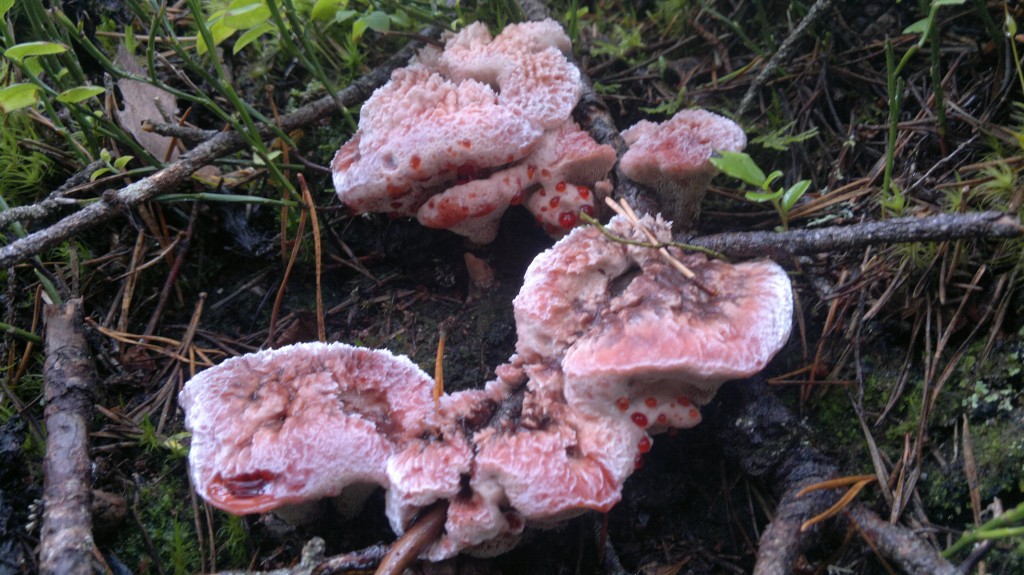
Bleeding Tooth Fungi, hdynellium peckii. A rare pale pink tooth fungi that exudes red fluid. Inedible.
Hedgehog mushrooms can be found nestling in grass and moss beneath spruce, pine, birch and beech trees between September and December, where they can look like puddles of of spilt cream in the arboreal twilight. Of course dozens of species have pale caps, but a quick check for pale cream to salmon pink coloured spines on the underside will confirm your catch.
Its a good job that they have their tell-tale protrusions, because most other things about them are quite variable. The cap can be fully grown anywhere between 4cm and 20cm in diameter – though the word diameter infers a reguarity of shape which you will rarely encounter. Both cap and stipe are eccentric to the point of potty, often lopsided, fused together or even bracket-like. Colour also varies from very pale cream through yellow, buff, chanterelle orange to salmon pink. Anything with a green tinge is literally beyond the pale and should be disgarded. Without wishing to complicate a mushroom that I promised you would be simple, orange and pink specimens are often smaller and more frail, in which case they may actually be hydnum rufescens. But you needn’t fret about this – the difference is scientific, not culinary.
Although hedgehog musrooms aren’t quite as common as chanterelles, you can often find them growing in the same locations. I know a few patches where, just as the chanterelles are starting to look tired and soggy, the hegehog mushrooms start to emerge, bright, fresh, tender and stubbornly resistant to the depredations of the late Autumn weather. They are solid little things too, and you can fill a basket with them in short order from what may initially look like a meagre patch.
Although they don’t look quite so glamorous as pristine chantetelles, I actually slightly prefer their flavour and texture – sort of the pretty girl’s plain, oddball sister, who is actually more fun to hang out with! With this in mind, I treat them like chanterelles, except occasionally buying them a drink – try flambeing them in calvados after sauteing before finishing with creme fraiche for a really decadent treat. They pickle well too. Fastidious types scrape off the spines before cooking, claiming they can be a little bitter, but this isn’t necessary.
Related posts:

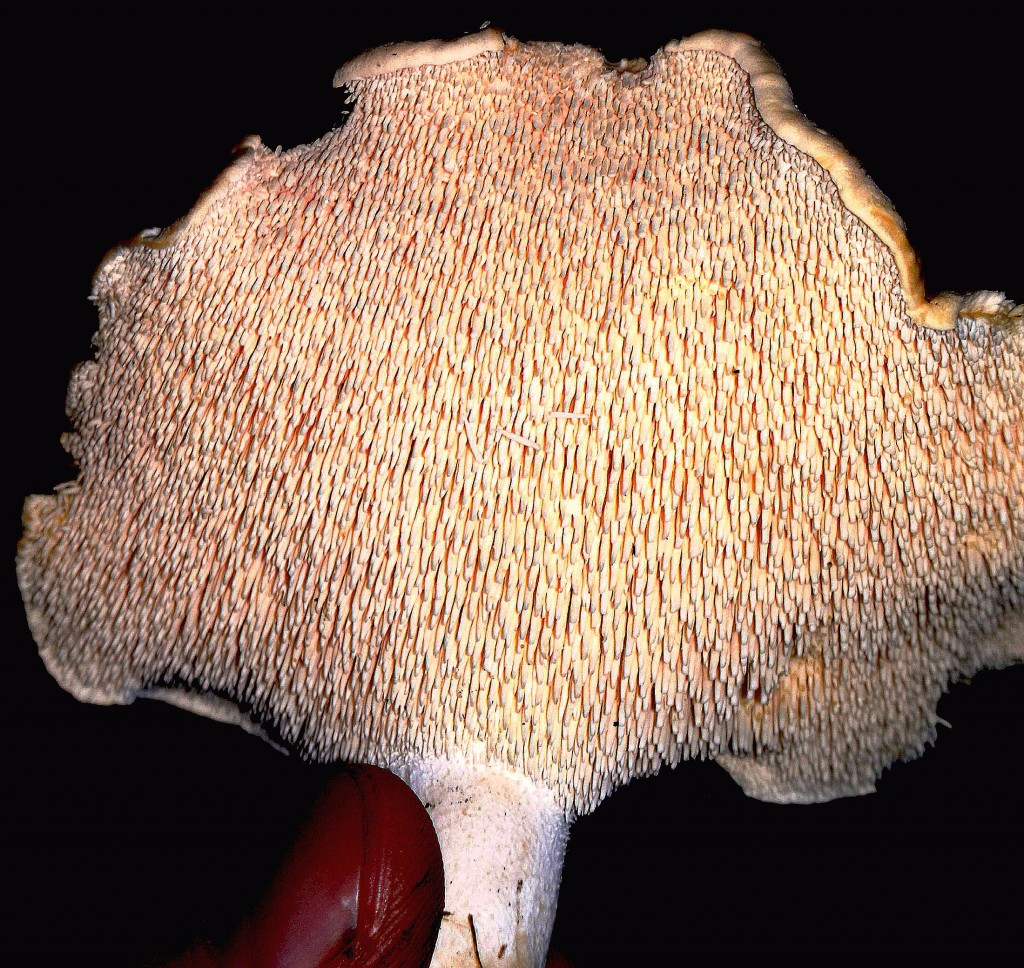
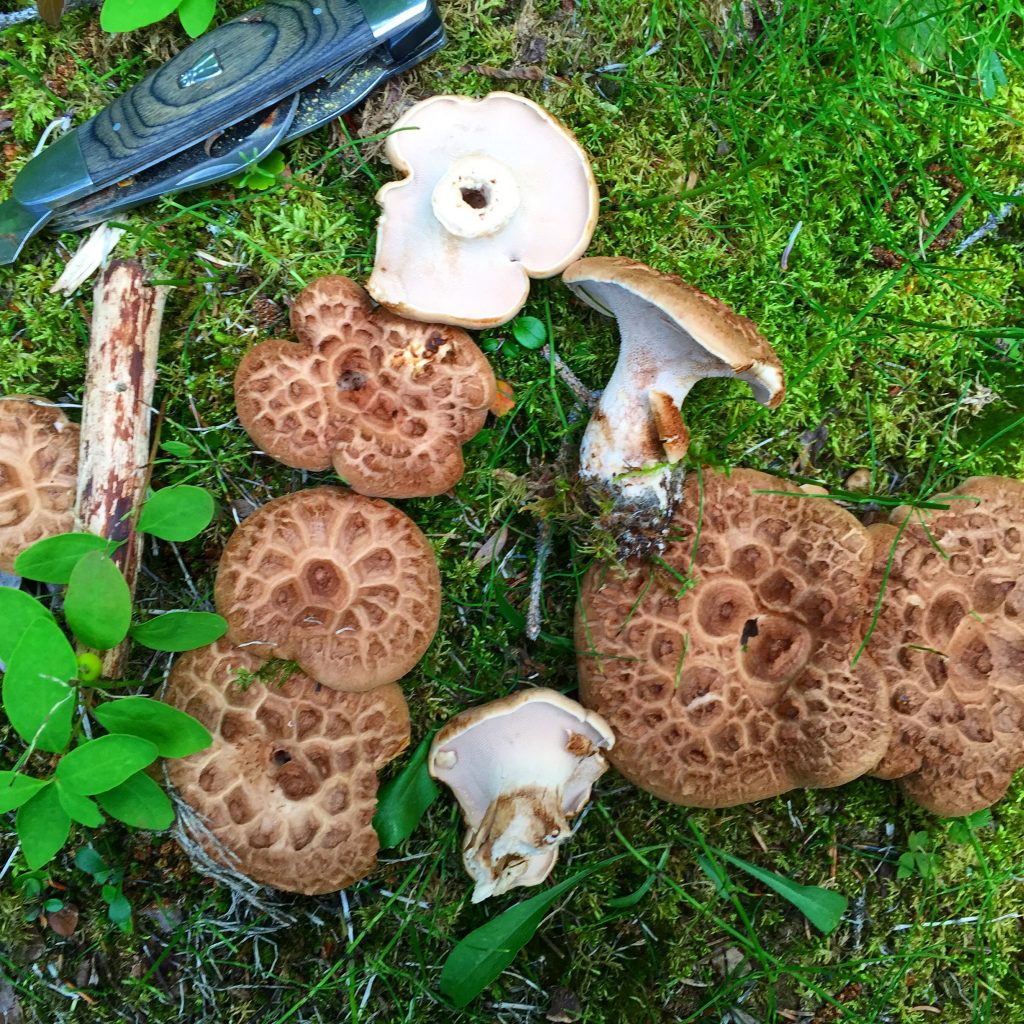
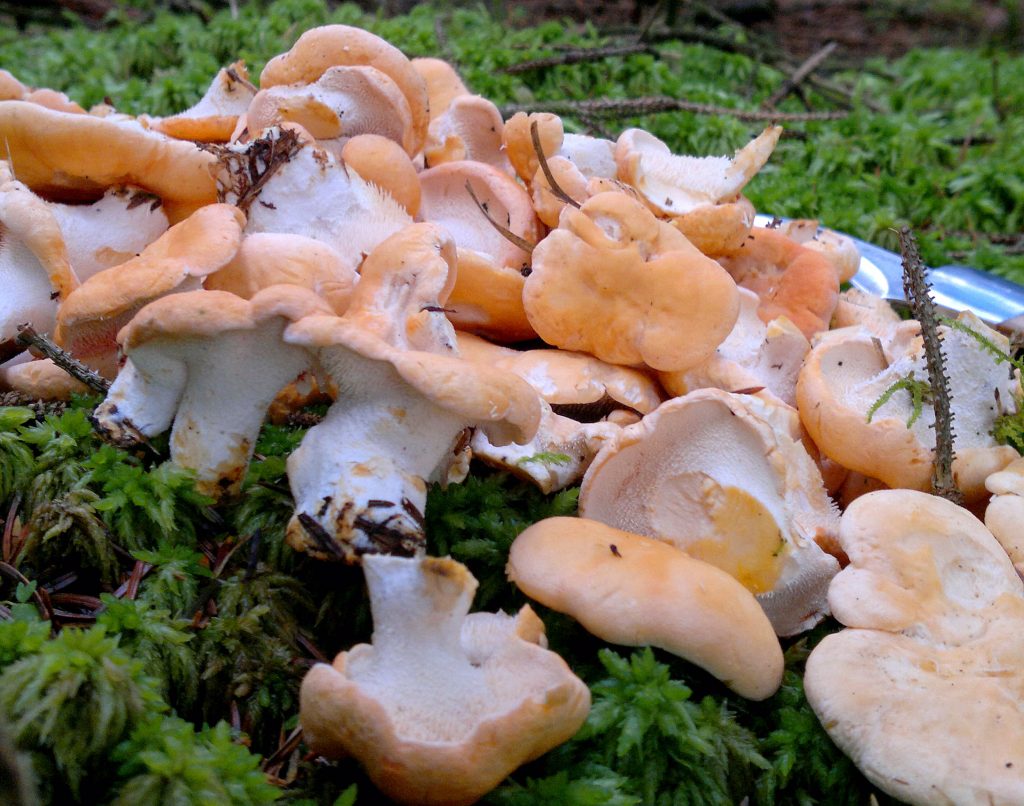
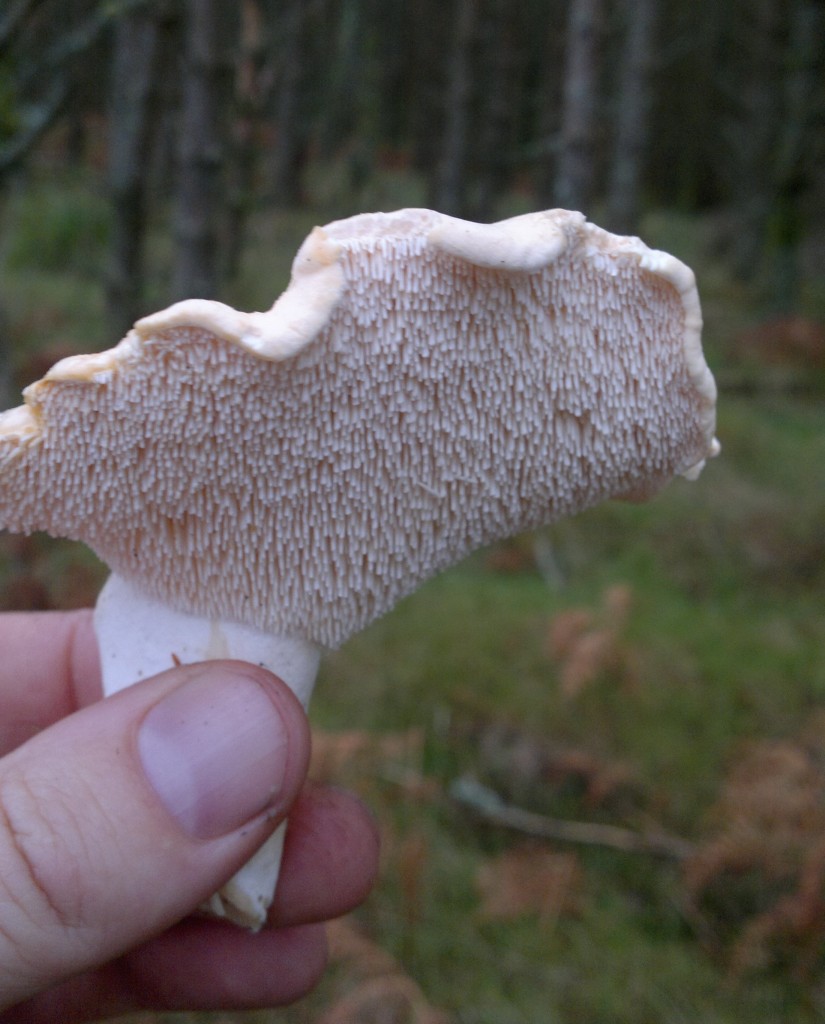

11 Comments
Met you at isle of Whithorn grazing for lunch!!! Good patches of hedgehog ,s near us in Argyll.
Used to toil for a living at Rowan Glen !!!
John.
Hi John, That was a memorable lunchbreak foray on the cliffs! Lucky you – hedgehogs are great – its been a good year for them already and they are still coming! Got so many, i’m preserving them in oil!
I live on the gold coAst & would love to buy some hedgehog mushrooms as I have a great recipe but cant find them. even dried ones would do.
Hi Ettie, I don’t sell wild foods myself. I don’t recall ever seeing dried hedgehog mushrooms for sale, but I’m sure you will get them if you search online. Good luck!
Hi does anyone have an email address so I could forward them a picture of a wild mushroom I have growing on my lawn to see if anyone could identify it
Cheers in advance
Dave
Hi,
I’m happy to try to help, but please read this first http://www.gallowaywildfoods.com/?page_id=1239. Email, twitter etc on my contact page
Cheers,
Mrk
Hello …we live in Newton Stewart …and looking for events with you – in the week 24-30 October …please would you let me know what’s on and so forth? We will be 4 people…do you have 2 or 3 day events – that are foraging, gastronomic and Galloway (or similar?) …please let me know.
Cheers and hope to hear from you
All the best
Peter
Hi peter, Thanks for your enquiry – I have sent you an email.
Best wishes,
Mark.
Hi john I have a large amount which looks like your pic of hedgehog mushrooms have appeared under a Himalayan birch in my front garden , are these really edible ? I wish I could send a pic ,but they are cream underneath and on top with the dimple in the middle
Pale fungi with teeth are one of the species listed above. The dimple suggests h.rufescens or h.umilicatus (if you are in the states).
Found some of these just now in the Dalbeattie Wood.